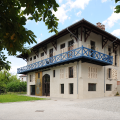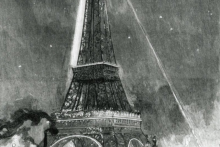2024
Recommended
•
2024
An exceptional place of remembrance where the arts, sciences and technical innovations in industry come together.
Like the hydroelectricity used by engineer Aristide Bergès for his paper mills in the late 19th century, this museum is an inexhaustible - and free! - of wonder. A museum to discover in an exceptional place of memory, where the arts - Art Nouveau and eclecticism - mingle with technical innovations and the spirit of the Belle Époque. The Maison Bergès also offers a host of events and exhibitions not to be missed.
Did you know? This review was written by our professional authors.
The strengths of this establishment:
Advertising
Advertising
Organize your trip with our partners Villard-Bonnot
Transportation
Book your plane tickets
Car Rental
Accommodation & stays
Find a hotel
Holiday rental
Find your campsite
Tailor-made trip
Eco-responsible holidays
Services / On site
Activities & visits
Book your parking lot
Activate your VPN
Request your visa
Travel insurance
Book the Best Activities with Get Your Guide
Members' reviews on MAISON BERGÈS (WHITE COAL MUSEUM)
4.5/5
32 reviews
Value for money
Service
Originality
The ratings and reviews below reflect the subjective opinions of members and not the opinion of The Little Witty.
Advertising
Find unique Stay Offers with our Partners

The best at Villard-Bonnot and around
Advertising
Advertising









Mais c'est de plus l'occasion de découvir une personnalité méconnue, et attachante, celle d'Aristide Bergès: jeune ingénieur centralien originaire du Sud-Ouest, inventif et curieux, qui est le créateur de l'Houille Blanche. Le musée retrace bien l'histoire d'Aristide, de ses créations et du développement de la papeterie au XIXe, et de sa famille amie de Mucha (le célèbre affichiste).
Le musée donne également une bon aperçu de l'histoire industrielle du Grésivaudan, et héberge des expositions temporaires qui peuvent être très intéressantes (telle celle sur le reportage photo effectué dans les années 1960 sur la vallée du Grésivaudan par des jeunes de Crolles, à l'initiative de Paul Jargot).
Prévoir entre 1 et 2 heures de visite selon le temps passé à lire, écouter ou visionner les documents.